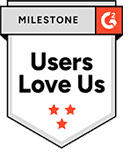Performance management in corporate real estate has matured rapidly over the last decade, driven largely by the evolution of sophisticated real estate management systems. With the advent of Integrated Workplace Management Systems (IWMS) and now cloud-based point solutions (like Visual Lease), CRE organizations have more options than ever in how they manage and measure portfolio performance.
A key feature of these systems is the ability to customize metrics to fit organizational priorities. For example, some organizations set up “role-based” dashboards that surface different KPIs for leasing specialists, project managers, or maintenance managers. But regardless of role, there are several universal performance measures that can help any corporate real estate team—and consulting organizations in particular—quantify the true cost and utilization of their leased workspace.
Core Portfolio Performance Metrics
Cost per square foot
Perhaps the most general performance metric of a corporate real estate portfolio is the unit cost per square foot. This would reflect the annual total cost of the portfolio. Separate costs for leased facilities and owned properties are usually presented. For owned properties, I recommend establishing market values to assess marketability. These assessments can usually be completed by your real estate advisors, on a periodic basis.
Square foot per employee (Cost per seat)
This will reflect the efficiency of the office portfolio on an annual basis. For consulting organizations, this is often reframed as cost per seat. By dividing total occupancy costs by the number of employees or “seats,” leaders can calculate exactly how much workspace costs per billable consultant. For organizations that have adopted shared office techniques like office hoteling, the ratio should be lower than for traditional 1:1 (workstation per employee) utilization.
Leasing churn
This metric reflects the percentage of leases renewed, retired, or extended on an annual basis. The higher the churn rate, the less efficient the portfolio. Ideally, CRE managers prefer to stabilize the portfolio with selective options, or longer lease terms. Lease term should now be considered in the context of the new FASB standard which puts the net present value of all leases of more than 1 year on the balance sheet as assets and corresponding liabilities. (beginning in early 2018) The longer the lease, the higher the values, so tradeoffs between stability and churn will have to be made.
Escalations as a percentage of annual rental
This metric will reveal whether a specific lease is abnormally costly as a result of excessive CAM or other charges. It will flag the lease for a potential audit to determine if there are over-charges from the landlord. One possibility is the landlord is erroneously including capital expenditures in the CAM calculation which would greatly inflate the cost.
Employee satisfaction with the work environment
Consistent with the use of the “balanced scorecard,CRE managers should survey representatives from the employee based on their satisfaction with the work environment. Normally, surveys are conducted bi-annually, on representative facilities. The degree of satisfaction will provide insight on office standards, décor, and services. In my own experience, these surveys combined with cost and utilization metrics cited above, give useful perspectives on prioritizing leasing actions.
Sustainability metrics
Portfolio performance metrics would be incomplete without measuring the environmental quality of the portfolio. Here attention should be paid to the energy efficiency, carbon footprint, or other indicators that reflect the environmental quality of the portfolio. Many corporations today place significant emphasis on sustainability; so it’s wise to include some rating system in the portfolio performance dash board.
Tying Metrics to Billable Utilization
For consulting organizations, the true value of these metrics is in their ability to connect space costs with revenue generation. Cost per seat establishes the baseline expense of providing workspace, while utilization metrics (how often those seats are occupied, and whether by billable consultants) reveal whether the portfolio is being leveraged effectively. A low cost per seat combined with high billable utilization indicates an efficient, revenue-aligned workspace. Conversely, high costs paired with underutilization flag opportunities for consolidation, subleasing, or more aggressive shared-desk strategies.
Performance metrics give the CRE manager and his team the necessary indicators on how the portfolio is performing on a cost, utilization, environmental ,and customer (employee) satisfaction basis. These metrics should be readily available from the Lease Management system amplified with survey and environmental data, and customized to meet the priorities of the organization. For consulting firms, this means using metrics like cost per seat and billable utilization to directly connect real estate strategy to business outcomes. The old adage, “You can’t manage what you can’t measure,” certainly applies to real estate portfolio management.























